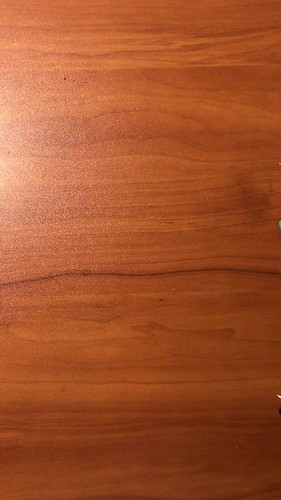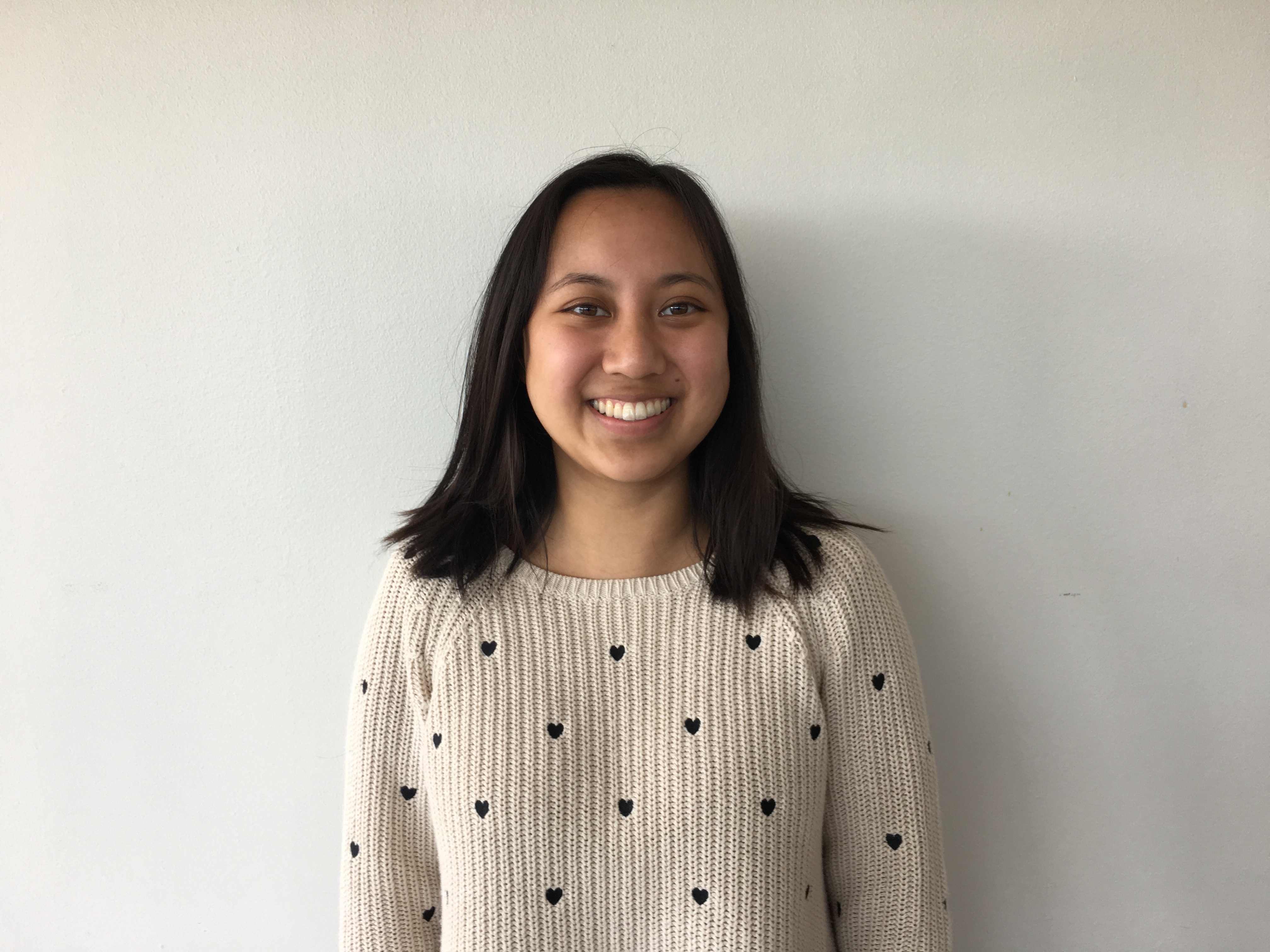A New Edition of Genuine Copies
Throughout the summer, the two things I relished the most about cataloging were: 1. Feeling and imagining the accumulated histories of the books as I paged through them; and, 2. Discovering bits of these histories as came upon inscriptions, marginalia, doodles, and scraps of fabric in each book. It was delightful and honestly a little magical to flip the last page of back free end paper in a book and find it covered in somebody’s original poem. Or to see somebody’s childish handwriting (incorrectly) subtract 1792, the year of a book’s publication, from a year in the 1800s, with which they inscribed the book. Seeing this, I immediately subtracted both 1792 and the 1800s date from 2017 on my phone, just to feel those temporal differences.
For my personal project, I wanted to consider the timeline of the books we catalog. How have they been read, used, interpreted, and handled - and how will they be in the future? How does a book act as a record of its own history, and how does it communicate this history in paratextual ways? My objective was to build on these questions and create a physical object that captures the multiple, intersecting existences of a novel as a text, as a book, and as a specific object, or copy of that book—when we catalog a specific copy we interact with not only the authors, publishers, and editors of the text, but also all of the people who have previously read, owned, borrowed, or cataloged that book. In this way, the book exists not only as a container for the novel’s text, and its story, but also as an object in itself. The specific copy that we catalog has its own history, and its addition to the END dataset adds to that timeline. If every pencil underline or aspect of design in a book is intended to inform future readers of how that particular publisher or owner has interpreted it, then our END code adds another layer. We write our own interpretations into the catalog. And, as time passes, the book begins to exist in multiple planes: physically, in the library; digitally, as code and as a digitized edition; in memory, as a book meant for popular enjoyment; in academia, as an object of study; in END, as a multifaceted point in a dataset.
The book that I chose to work with was Genuine copies of all the love letters and cards which passed between an illustrious personage and a noble lady during the course of a late amour, a juicy epistolary novel dated around 1770 by the actual scandalous lawsuit between Henry Frederick, Duke of Cumberland, and Henriette, Countess Grosvenor. This book had been recently scanned into END’s Digital Collection and read with Optical Character Recognition. This summer, I used my laptop to correct the .txt file generated by the OCR. As I corrected each of the numerous misspellings involving the letter “s,” I saw the novel’s timeline as a series of changing media: written, printed, and digital. Thus, for my project, I initially planned separate editions of Genuine Copies, designed to represent the differences between the media they encapsulated.
However, I soon found myself reconsidering the validity of these divisions. Print, written, and digital media cannot exist independently; the ways we produce and consume various kinds of media are actually inseparable from each other. Digital facsimiles of printed text rely on print media and print form, and print media is designed to contain the medium of the written word. Computer-read OCR text must be hand-corrected by rearranging print, and digital files are often printed out, so that they can be written on by hand. The media timeline does not move forwards, in a line, but rather back and forth, to include all the media that have been worked with before. The digitization of a book like Genuine Copies also makes easier the book’s reprinting. Reprinting, in turn, gives rise to more of the written inscriptions that we at END so enthusiastically document.
Thus, for my new edition of Genuine Copies, I aimed to reflect on the movements back and forth, or between, various kinds of media, rather than the clean-cut differences that mark written, print, and digital texts. Instead of a fully easy-to-read text, the result is, in a way, a documentation of END’s cataloging process. To put together the pieces of the story, one has to page through the text of another book, The Matter of My Book: Montaigne’s Essais as the Book of the Self, which I conveniently obtained from the Kislak Center’s free book cart. As the series of letters and cards shows the royal affair building up and then falling apart, the text’s presentation also changes. It moves from the fictional/factual handwritten letter, to a print, to a scan, and then a reprinting, layered with metadata and paratexts about how the novel exists on copy-specific, personal, or library planes.
The book is messy, containing many printed screenshots, useless and casual marginalia, inscriptions by all of the 2017 END students, a leaf from the garden of Mark’s Café in Van Pelt Library, post-it notes from my secondary reading, cut-outs from old Sotheby’s catalogs (also from the Kislak cart, potentially representing the book as an object) and 1.5 sticks of washable school glue in its pages. It can be interpreted as a new edition, a timeline, a scrapbook collage, or merely a destruction of a perfectly fine copy of Richard L. Regosin’s 1977 book, The Matter of My Book. Either way, what I hope to have captured in the book is the fun and magic of cataloging: the excitement of finding evidence that someone did the same thing as you long ago, and the excitement of knowing someone might do the same in the future. Books embody and record human interactions, not only through what they communicate but how—in design, in paratextual additions, in the creation of rich catalogs like END. Part of this must explain the importance and interest of not only cataloging, but also books and reading as a whole.

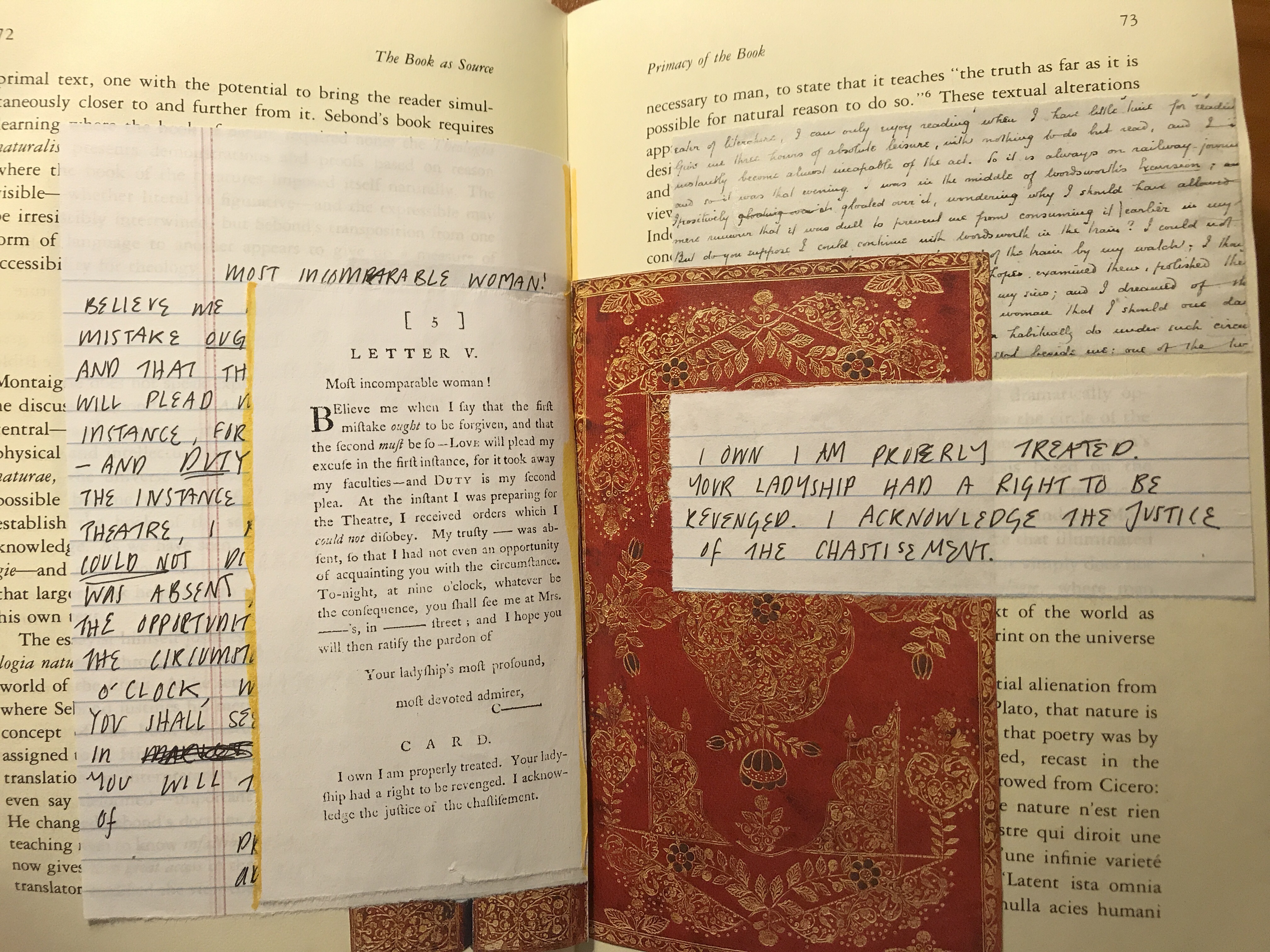
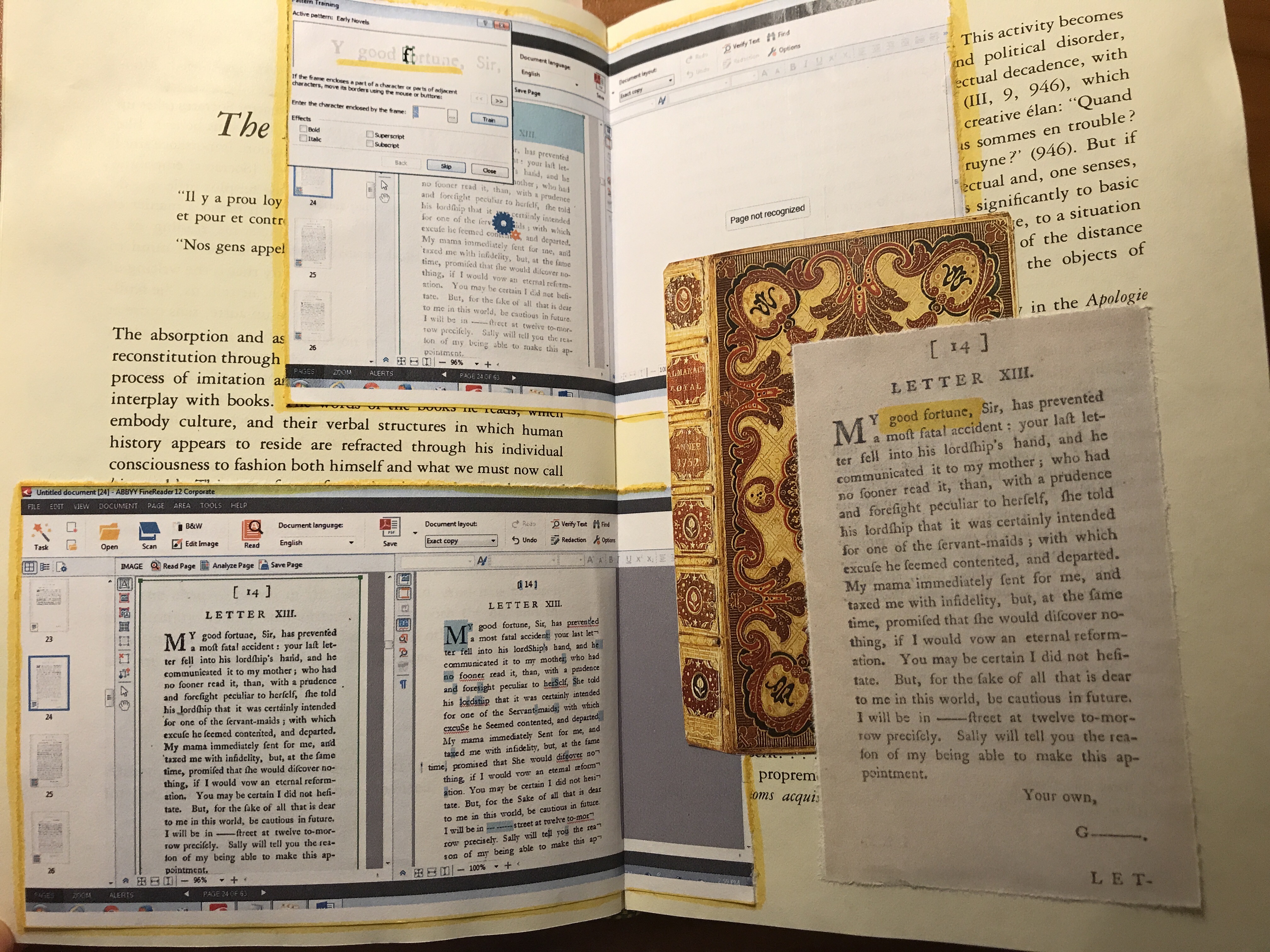
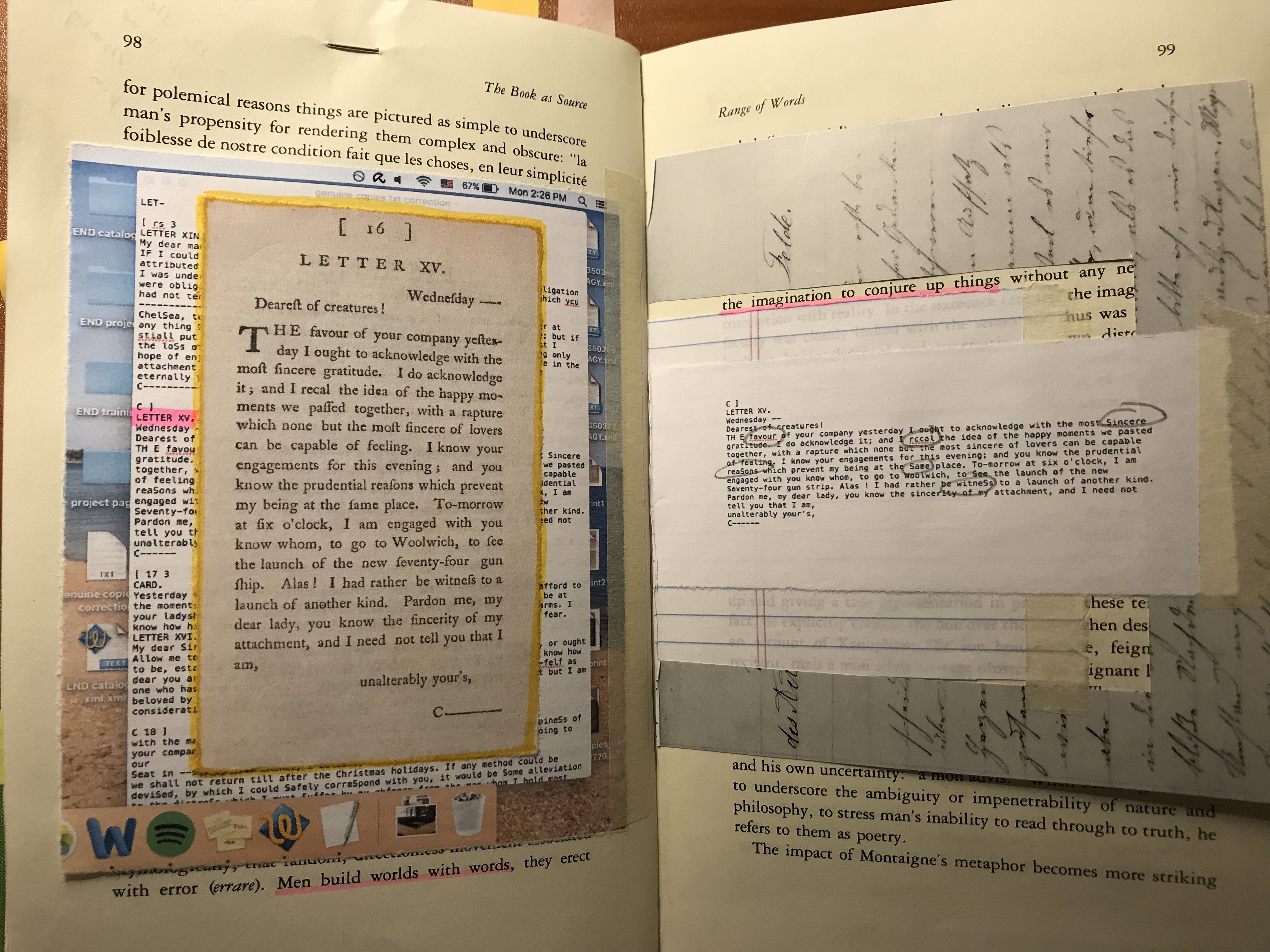
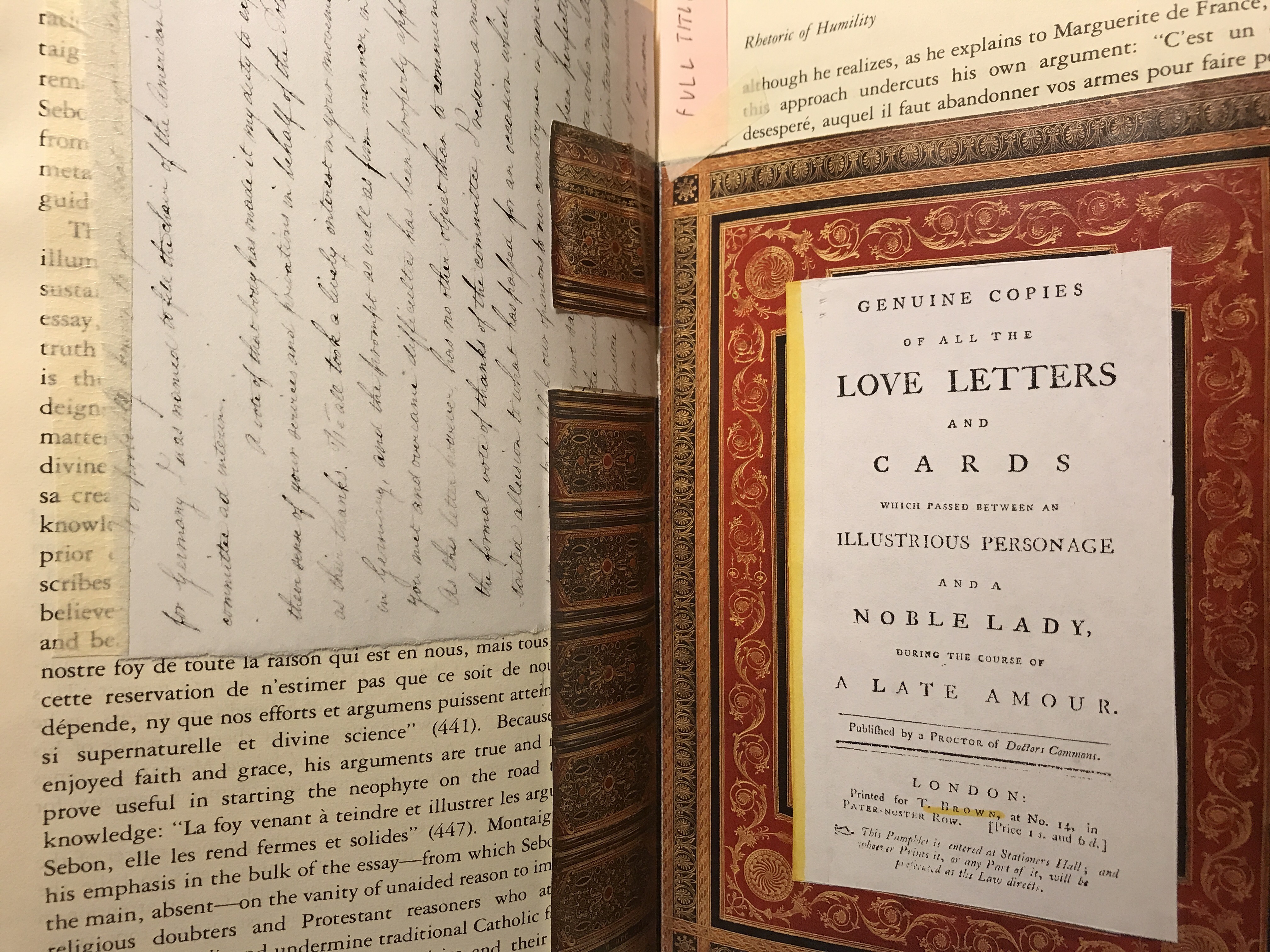

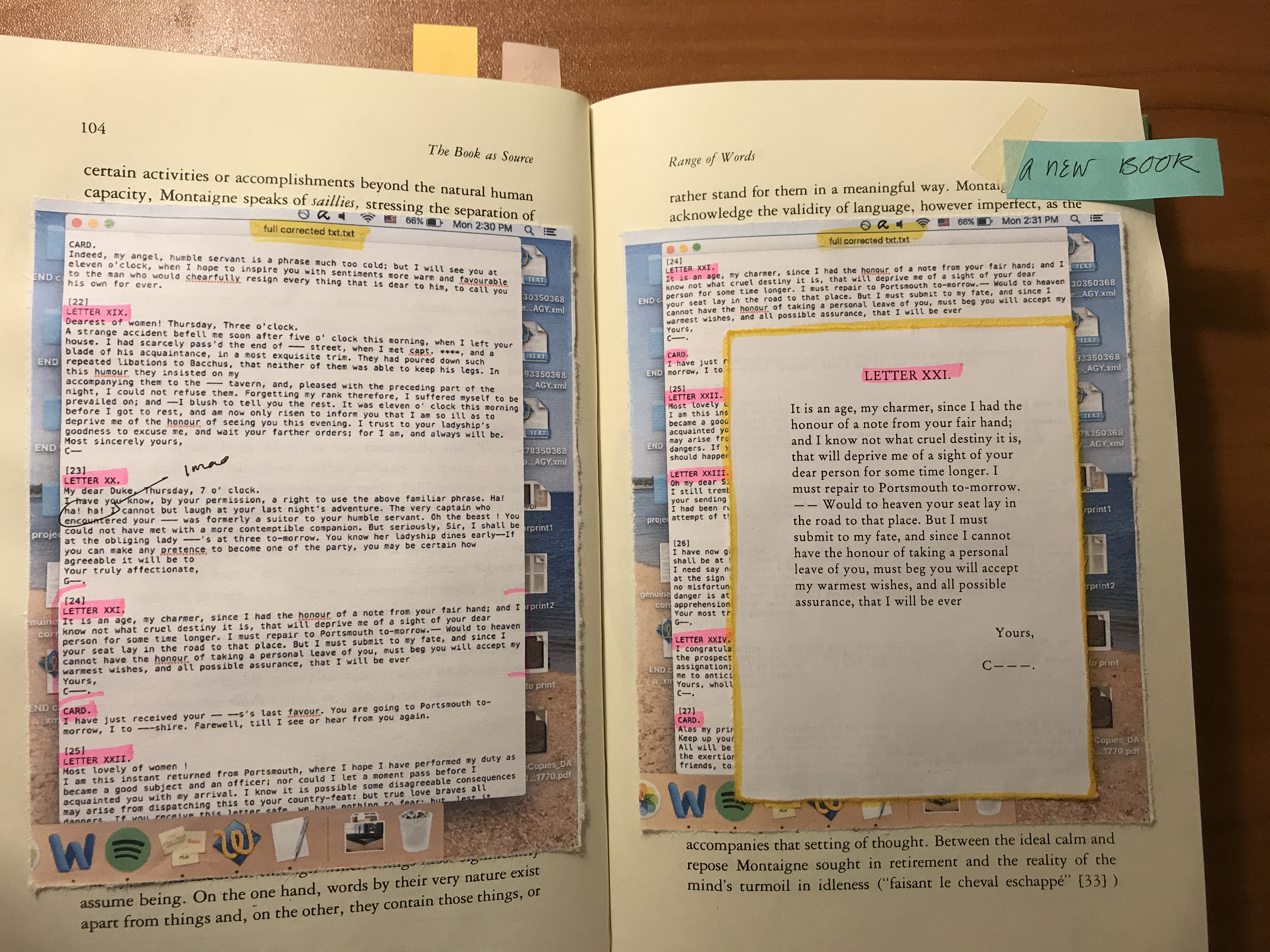
Works Consulted
Genette, Gerard. Paratexts: thresholds of interpretation. Cambridge: Cambridge U Press, 2001. Print.
Gitelman, Lisa. Always already new: media, history and the data of culture. Cambridge, MA: MIT Press, 2008. Print.
Mak, Bonnie. How the Page Matters. Toronto: U of Toronto Press, 2014. Print.
McLuhan, Marshall, and Quentin Fiore. The medium is the massage. London: Penguin,2008. Print.
Price, Leah. How to do things with books in Victorian Britain. Princeton, N.J: Princeton U Press, 2012. Print.
